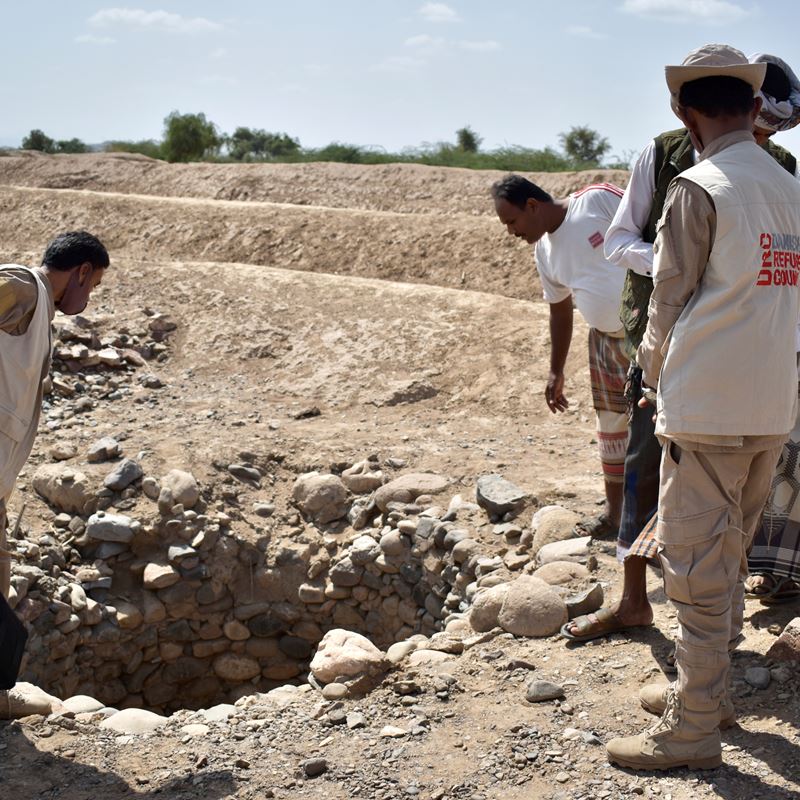The deadly legacy of Yemen's forgotten conflict
As Yemen enters its eighth year of fighting, civilians are in danger from the growing and deadly threat of landmines and unexploded ordnance left behind by the conflict.


Eman returned home after being displaced by the fighting in her village, to find the land around her house littered with landmines.
To get water from the well, to collect firewood, to graze our animals, to do anything we need to do to survive, we have to cross the minefield. Every day I have to make the choice; to risk death by a landmine or to die of thirst.
Eman

Mohammed, 29, opens his notebook. Each page is filled with his neat, careful handwriting-the names and details of people in his community who have been injured by landmines or other explosive ordnance. There are three pages of names, just for January.
Working alone, without a salary or support, Mohammad has been arranging transport and medical support to people injured by landmines and other explosive ordnance.
Sometimes I think about giving up because there are too many victims and not enough support. But if I don’t do this work, then who will? Someone has to help these people.
Mohammed, 29

In Mowza, western Yemen, a tiny school sits perched on top of a hillside. The building is riddled with bullet holes and the three small classrooms are in a bad state of repair, but it’s the land outside the school that poses the most threat to the young pupils. T
o get to school each day they must walk on a narrow, dusty track that goes directly through a minefield. Abdil, the school’s headmaster said:
We just want things to get back to normal so that children can come to school and learn. All the children here have hopes and dreams for the future–they’re ambitious.
Abdil
Some want to be teachers, some want to work in the government, others want to be doctors but to do that they need education and a safe place to learn.
Abdil

Abdullah, pours water for his goats into empty storage containers for bullets and soldier’s helmets, the remnants of Yemen’s ongoing seven-year conflict. He gestures to an anti-tank mine lying on the ground nearby:
There are mines everywhere here and we can’t use our land. Before life was very good. I could use my land, bring sheep to graze safely and grow crops. I saw myself as a rich man–I had enough food to eat, and my family was safe. Life now is very different, I struggle to feed my family.
Abdullah

Saeed was driving to see his sister in hospital in Mokha when the accident happened. The car he was driving hit a landmine, which exploded instantly, killing his three-year-old daughter, and injuring her nine-year-old sister.
I am scared about my children having another accident. I was walking in the fields, and I found a rocket. We don’t have any way to dispose of it safely, so we moved it from the fields and hid it in a bush, to stop the children from playing with it.
Saeed
They even put landmines in our village well. Now no one can use it. We’re too scared to dig another well in case we hit a mine. I want to tell the people who are fighting to stop the conflict. We just want life to go back to normal.
Saeed